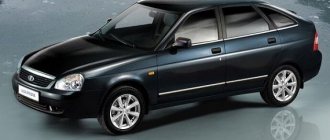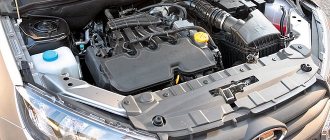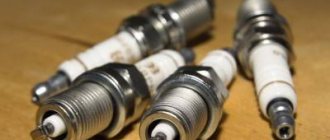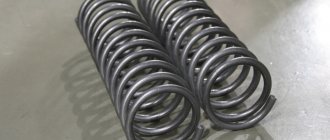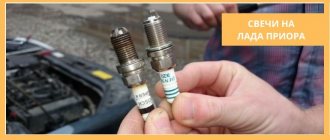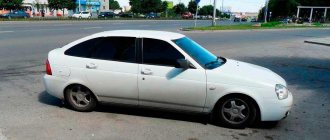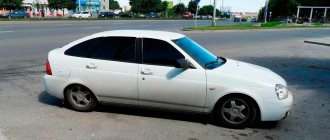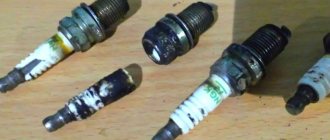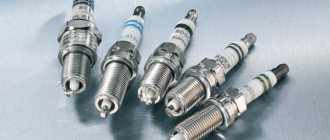A broken timing belt (gas distribution mechanism) on many modern engines causes the piston to hit the valves. The result is that the valve bends, and the piston itself can also be damaged. For this reason, some car enthusiasts change the piston group in the engine, installing a so-called plugless piston.
Plugless pistons have a slightly modified design compared to the standard, which avoids contact between the valves and the piston in the event of a timing belt break. However, it should also be taken into account that after installing pistons of this type, the characteristics of the motor also change. Read more in our article.
Reasons for installation
Here guys, everything is individual, as I have already written in many articles, if you follow the technical maintenance regulations, install original or high-quality spare parts, then your “iron horse” will not let you down - the units will operate in normal modes.
However, you always want to save money or tune up your car, but this raises some questions. Namely:
1) If we save, in particular, on the timing system (belt and other rollers) by installing low-quality parts, then their replacement interval drops significantly. For example, as a standard on our VAZs, the timing belt is changed after about 30 - 50,000 km, but if cheap "non-original" ones are installed, it can last about 5,000 - 10,000 km, or maybe less.
2) Also, some “people’s tuners” who try to squeeze more power out of our PRIORs often install air compressors on the engines. But most of the parts are not designed for such speeds (7000 - 9000), just as the gas distribution system is not designed. As you guessed, the connecting link of the belt simply breaks.
So what should we do? After all, you want to save money and drive? There is a solution (damn, just like in the advertisement) - “stickless pistons”!
Groove on top
To call them plug-free is not literary, but in a “garage” way - they will immediately understand you and appreciate your technical potential! This name comes from a simple trick - the piston does not meet the valve with the help of a special groove on top - that is, the valve DOESN'T fit into the piston, that's the name.
However, if you tell it technically and literary correctly, it turns out that there are several grooves in the upper part of the piston. Their number can be different - from 2 to 4 pieces. It is thanks to these grooves that these two engine elements do not meet. That is, the correct name is a piston with grooves.
STI, Tolyatti
These products are manufactured in Tolyatti using hot pressing technology. Judging by the reviews of those who have already equipped the engine with them, the parts significantly reduce the efficiency and power of the engine. This can be explained by the low compression ratio and large cylinder size. Valve recesses are too deep.
The low silicon content in the alloy does not have the best effect on the strength characteristics. A lower nickel content reduces the resource. At the same time, forged pistons from STI have a high cost.
pros
Needless to say, this system is very durable. Even if your timing belt breaks and the overhead camshaft with a set of valves freezes in place. If the piston comes from below, pushed by the crankshaft, then no disaster will happen - they will simply fall into the grooves and everything will be fine. That is, we just take the car to the service station, they restore the timing mechanism and you drive on. A VERY big plus.
I would like to note right away that if there are no such grooves, then you are faced with a very unpleasant repair. You can change the pistons, and the camshaft pastel; I’m already silent about the timing belt with all that it implies. Repairs, for example, on a foreign car of class “C” or “D” can vary from 30,000 rubles and more! That’s why many people think about installing “stickless” pistons; they sleep more peacefully - well, the system breaks down, so what, the grooves will save them.
But if you think about the disadvantages, they also exist and for many manufacturers they are significant!
Minuses
When many AvtoVAZ engines appeared for front-wheel drive cars, engineers equipped the pistons with such grooves from the factory. That is, this resource was already included in production, such tuning was associated with installing a timing belt instead of a chain, and since it is less reliable, they were simply insured. This was the case with many foreign cars of those times (not all, but a large number).
However, nothing stands still, everything develops. So we got to the piston itself, the fact is that if you lighten it as much as possible, the engine gains additional power, as some manufacturers assure you can achieve about 5 - 7% of the power, this is very significant!
1) The piston with a groove cannot be called light! In order to go deeper in the top (to make grooves) you need to have a thick top, which significantly makes the piston heavier, which consequently removes power.
2) Also, the grooves have a bad effect on the compression of the fuel mixture. Which also “eats” power. In general, to summarize, installing such a piston will take away the same 5 - 7% of its power from the engine. Now imagine, if the engine is 150 hp, installing such options will take 10.5 hp away from it.
3) Another disadvantage is higher fuel consumption, since the volume of the chamber is increased - albeit by a little, but still.
4) Compression also decreases due to the larger volume.
5) Detonation also increases due to the less uniform distribution of the piston weight.
So many manufacturers refuse such an idea, all for the sake of productivity, efficiency and elasticity of the units.
Here, as they say, you need to choose - either maximum performance or security.
General information and piston design
The piston transfers the energy produced by the burning fuel to the crankshaft. With the explosive expansion of hot combustion products, the surface of the piston experiences mechanical and thermal loads of very high intensity. The maximum pressure in the Priora engine can reach 65-80 bar, which is equivalent to a force of several tons.
During operation, the piston periodically accelerates to over 100 km/h and decelerates to zero with a frequency of up to 200 Hz at 6000 rpm. When the fuel-air mixture burns, the temperature in the cylinder reaches 1800-2600°C, which is several times higher than the melting point of the material from which the piston is made. In this case, the strength of the alloy decreases; thermal stresses arise along the piston body due to temperature changes, to which are added stresses from gas pressure and inertia during acceleration and deceleration at high frequencies.
In order to “survive” in such difficult conditions, the piston must be lightweight and resistant to wear, and the high thermal conductivity of the alloy is designed to ensure rapid cooling of the piston when heated.
Spare parts produced by Avtramat
The outer surfaces of the piston must be formed so that under no circumstances does it jam in the cylinder, so that hot gases do not penetrate into the crankcase. Given the difference in heating between the piston bottom and its skirt, the piston has a barrel-shaped shape when cold, which allows it to meet these requirements.
To compensate for deformations of the skirt during operation of the piston, it is made with an “anti-ellipse”. Its major axis is perpendicular to the axis of the finger hole.
The top part of the piston is the head. It includes a bottom and grooves for installing O-rings. In order for the head to withstand the loads that fall on it, a protective coating is applied to it.
The grooves for the rings are made at a slight angle, ensuring that the outer edges of the rings are located higher than the inner ones. This prevents the groove cross-section from sloping downward when operating under high temperature conditions.
For better sliding, the piston surface is treated with various coatings. For better running-in, coatings are applied that wear out over time during running-in (tin, phosphating). They also reduce the occurrence of scratches when starting a cold engine. Anti-friction coatings (nickel plating, anodizing) remain for the entire period of operation, preventing cracking and erosion of surfaces.
The skirt is processed with cutters to create a micro-relief, which allows the oil to better adhere to the piston surface, reducing friction.
All these requirements are equally satisfied by Avtramat, STK and STI pistons. STK pistons are heavier than the others.
https://www.youtube.com/watch?v=pMp87h11dzI
Installation on PRIORU
As promised, I will describe the installation on our VAZ (PRIORA), because it is one of the most purchased cars in our country and it has frequent problems with the timing belt. Many will immediately ask the question - do the valves bend when they break? Read the answer here.
In principle, no difficulties should arise here, but it is practically impossible to do this yourself in your yard! The engine will need to be disassembled.
1) We buy plugless pistons; usually the kit can be selected directly to your piston size. That is, if you have an 86 mm piston, then you can also take a plugless piston of 86 mm. However, you need to either know the exact dimensions, or measure them at a service station during disassembly. The cost can vary from 3,000 to 6,000 rubles per set.
2) We disassemble the engine to remove the pistons; it may need to be removed. (Of course, you don’t have to remove it, this is at the discretion of the masters, there are methods both ways)
3) Remove the piston group and replace it with grooved pistons.
4) Next we assemble the engine
5) Let's go.
Many drivers sacrifice power for the sake of greater practicality - you can understand them, especially if you look at the aftermarket. If there is a break, you can fly into such repairs that it won’t seem like much, but this way you are protected.
Let's watch a short but useful video on the topic.
I will finish, I think you liked the continuation of the article. Read our AUTOBLOG, updates almost every day.
Similar news
- Do-it-yourself windshield polishing. In different ways + pass...
- How to check the adsorber valve. On our VAZs
- Different compression in the cylinders. Why and what to do? Let's figure it out...
Add a comment Cancel reply
FakeHeader
Comments 96
Good day, almost two years have passed since you wrote this post, tell me what is your opinion now about STK pistons, what is the current mileage, has there been any knocking or oil consumption?
Thanks everyone, bought everything, changed it, started it))) report later STK piston pins rings prima liners
What group did you put in?
Thanks everyone, bought everything, changed it, started it))) report later STK piston pins rings prima liners
Our weather is great, the roads are great too, it’s just a matter of driving it around.
STK take it - just don’t smell the automatic machine! - www.drive2.ru/l/5810979/ on the rollers of the belt - these are reinforced - - Timing belt - CONTITECH - CT1137 - Reinforced double-row support roller - TORQUE - KR5071 - Reinforced tension roller - TORQUE - KR5070
Thanks, I took the stk
STK take it - just don’t smell the automatic machine! - www.drive2.ru/l/5810979/ on the rollers of the belt - these are reinforced - - Timing belt - CONTITECH - CT1137 - Reinforced double-row support roller - TORQUE - KR5071 - Reinforced tension roller - TORQUE - KR5070
I installed the Torque rollers, they started buzzing right away from the box, I went to change them...
I personally installed it on 20 cars at my service center - not a single one buzzed - I really liked it
Well, apparently I got such a kit
change the key on the crankshaft along with the gear and belt, I will recommend ContiTech, the quality is excellent) good luck with the assembly
install the stk piston male rings only take the rings measure on the piston otherwise they gave me the VAZ ones of the required group and they didn’t fit took the male ones and don’t listen to about putting the belt on and drive I bought the car already had a Gates original belt, I checked it myself from the roller only 4000 bypass pulley fell apart thanks to the yellow-throated brothers (by the way, they told me that a Toyota roller can be picked up) and my stsuka was already torn, and at idle 14 valves out of 16 were bent; in total, I spent 18 rubles on spare parts for the piston head and everything else, so it’s better to change it than to spend it later, now I’m running in the piston stk drove 1000 km so far everything is fine oil is in place more than 2500 I don’t let you drive like a fart patience is running out :)

